CTRL+K
CTRL+K
Moroccan weddings are truly special events that bring together the country’s vibrant culture and deep-rooted traditions. Getting ready for these grand celebrations is a detailed process that involves many customs. These customs honor the strong bonds between families and communities. The wedding ceremonies themselves are a wonderful mix of bright colors, lively music, and meaningful rituals. They often last for several days. Traditional Moroccan clothing like gorgeous caftans and beautifully designed henna tattoos add to the stunning visuals. Music and dance play a big role, with the rhythmic beats of drums and flutes filling the air with joy and festivity. Most importantly, Moroccan weddings represent unity, hospitality, and the lasting beauty of shared cultural heritage.
Planning a Moroccan wedding is an intricate affair that requires careful consideration of various aspects. The preparations begin months in advance, with families coming together to discuss and finalize the arrangements. One of the first steps is determining the date, which is typically chosen based on astrological calculations and cultural beliefs surrounding auspicious timings. The bride’s family then embarks on a series of ceremonies, starting with the “Henna Night” where the bride’s hands and feet are adorned with intricately designed henna patterns symbolizing fertility, beauty, and good luck.
The wedding festivities usually begin with a special night called “Laylat Al Henna,” or Henna Night. On this evening, the bride-to-be gathers with her female relatives and close friends. Together, they decorate the bride’s hands and feet with beautiful, intricate henna designs. However, these designs symbolize joy, beauty, and protection for the bride as she prepares for her upcoming marriage. As the women apply the henna, they sing, dance, and laugh together. This celebration creates a feeling of excitement and anticipation for the main wedding event that is soon to come.
When the big day arrives, the atmosphere is electric with anticipation as loved ones and well-wishers assemble at an elegantly adorned location. The ceremony kicks off with the signing of the marriage contract (Aqd Nikah) under the guidance of an Imam. Heartfelt prayers are offered, wishing the newlyweds a lifetime of joy and abundance. The proceedings are infused with the melodious strains of traditional Moroccan tunes, enveloping the venue in a festive aura as the couple exchanges sacred vows and rings, sealing their union.
Moroccan weddings create a stunning visual experience that celebrates the rich cultural heritage of the country. The bride shines like a dazzling jewel in an intricately designed gown embellished with elaborate embroidery, shimmering sequins, sparkling beads, and precious jewels. Her attire symbolizes both exquisite beauty and the deep artisanal traditions woven into Moroccan culture. Wedding guests arrive in their most elegant traditional attire. Women gracefully glide in vibrant kaftans adorned with colorful patterns and delicate embroidery, while men cut dashing figures in ornate djellabas. This seamless blend of cultural heritage and modern elegance adds to the event’s enchanting ambiance.
The wedding venue transforms into a magical realm through intricate Moroccan decor. Vibrant lanterns cast a warm, inviting glow. Plush rugs and draped fabrics in rich hues adorn the space, embodying the warmth and hospitality inherent in Moroccan traditions. Moroccan weddings captivate the senses, celebrating not just the union of two souls but the enduring allure of a culture steeped in vibrant colors, sumptuous textures, and heartfelt rituals that have withstood the test of time.
In the Tafraout and Tiznit regions, among other Berber communities, there exists a unique custom surrounding weddings. As preparations commence, the future bride relocates to a neighboring house to alleviate the shyness she feels towards her father and brothers, avoiding direct encounters with them.
On the wedding day, her brother or another male relative assists her in donning her slippers, while her mother presents her with the traditional attire. Upon arrival at the groom’s home, the door is initially closed, prompting the bride’s entourage to sing and encourage the groom’s family to open the door. The bride awaits her mother-in-law’s welcome with a gesture of offering milk, drinking three sips before symbolically placing her hand on the door for peace and purity. Inside, she is prepared by women from both families before they all gather outside to sing and dance to ‘Ahwach’ rhythms. Later that night, the newlyweds dine at the bride’s family home to solidify familial bonds, followed by a visit from the bride’s family the next morning with various dishes.

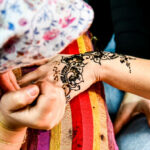

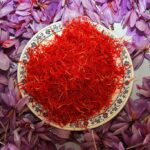
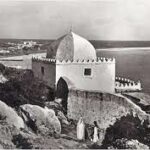









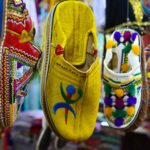
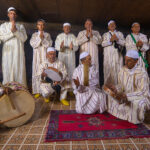

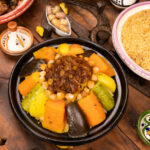







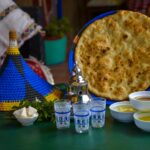
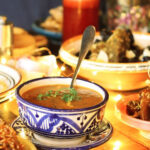

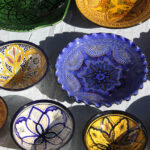
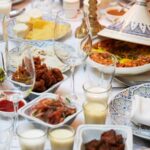

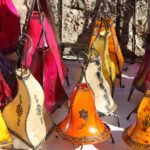





There are no results matching your search.
Reset